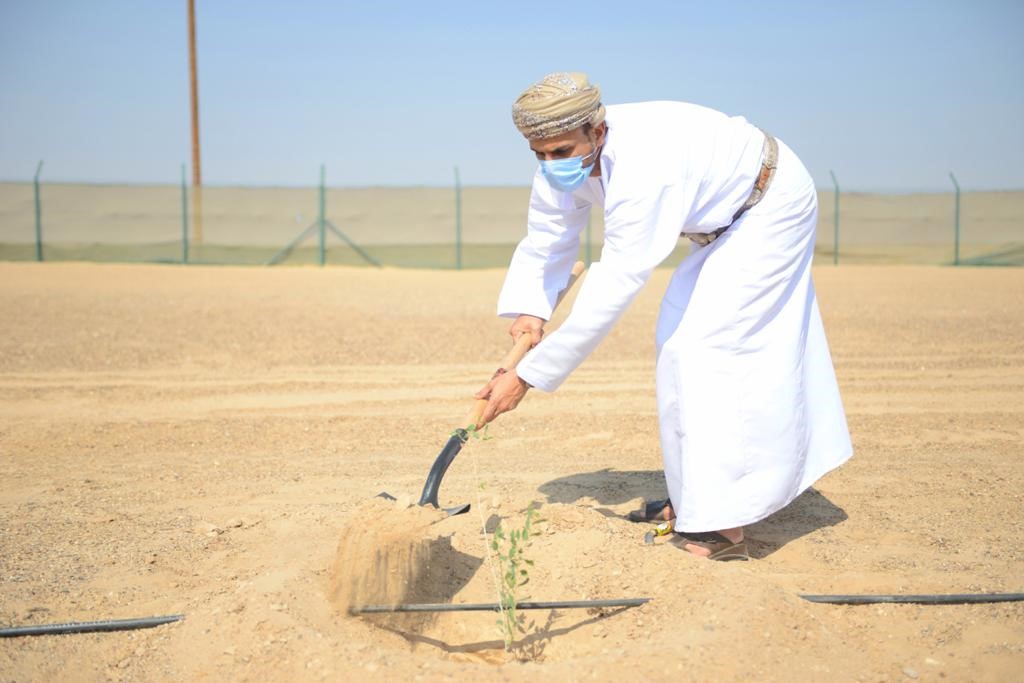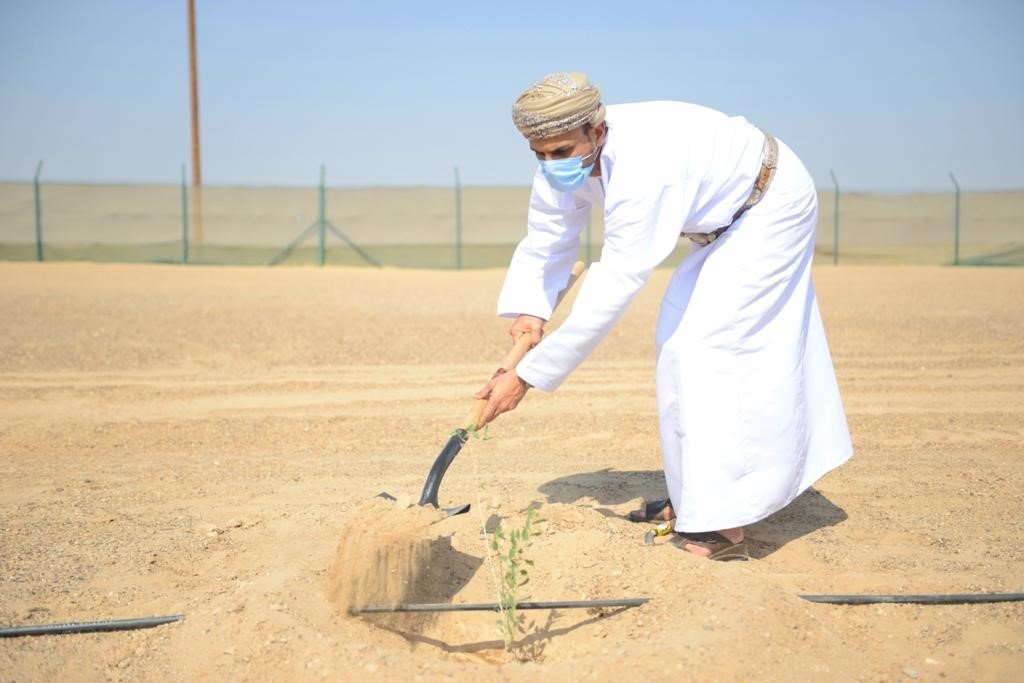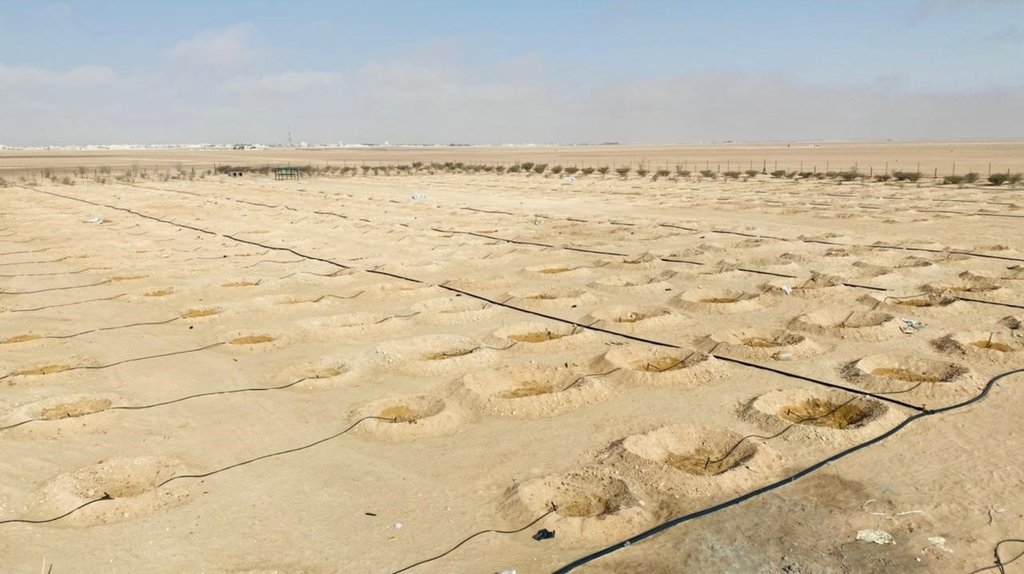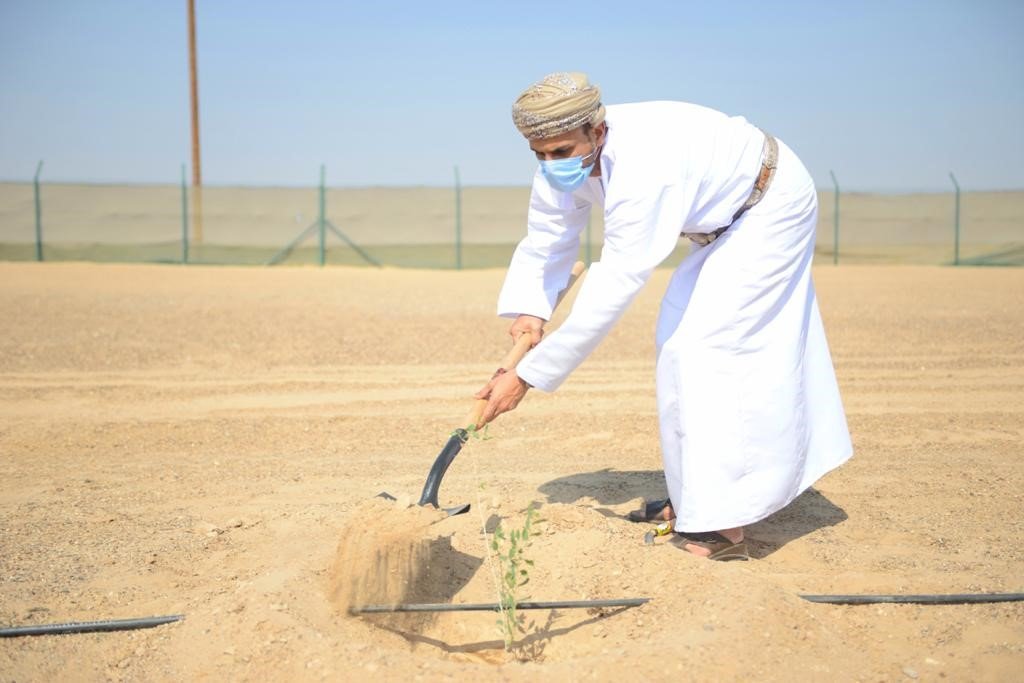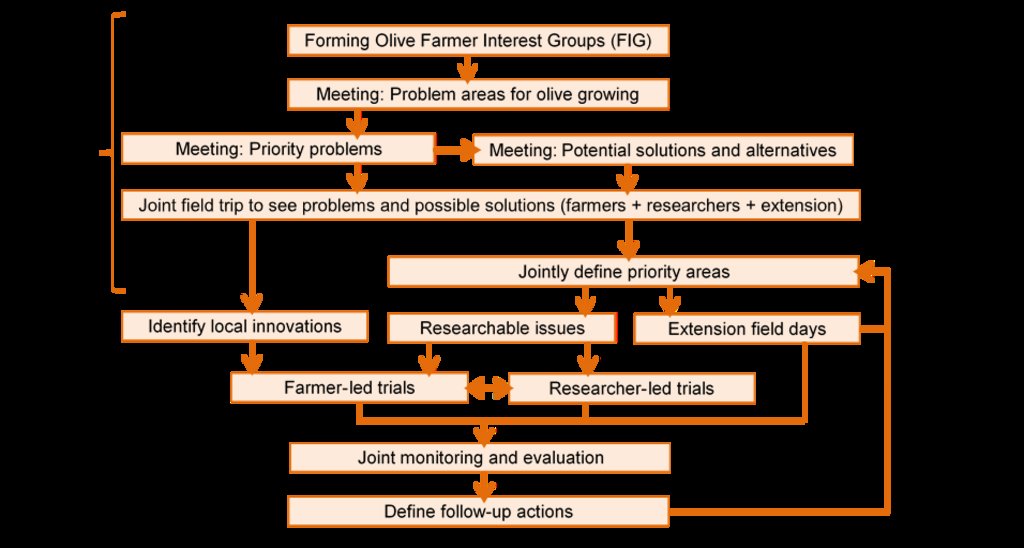Planting 10 million trees [Oman]
- Creation:
- Update:
- Compiler: Laila AlShmali
- Editor: –
- Reviewers: William Critchley, Rima Mekdaschi Studer
Planting 10 million trees
approaches_5974 - Oman
View sections
Expand all Collapse all1. General information
1.2 Contact details of resource persons and institutions involved in the assessment and documentation of the Approach
Key resource person(s)
SLM specialist:
Al-Sareeria Thuraya
00968 24404762
thuraya.alsareeri@ea.gov.om
Environment Authority
Muscat, oman
Oman
SLM specialist:
Al-Saadi Saleh Naghmush
00968 24404750
saleh.alsaadi@ea.gov.om
Environment Authority
Muscat, Oman
Oman
SLM specialist:
Al-khanjari Iman
00968 24404332
iman.alkhanjari@ea.gov.om
Environment Authority
Oman
Name of the institution(s) which facilitated the documentation/ evaluation of the Approach (if relevant)
Environment Authority, Oman (Env Authority) - Oman1.3 Conditions regarding the use of data documented through WOCAT
When were the data compiled (in the field)?
2020
The compiler and key resource person(s) accept the conditions regarding the use of data documented through WOCAT:
Yes
2. Description of the SLM Approach
2.1 Short description of the Approach
An initiative launched by the Environment Authority, in cooperation with Petroleum Development Oman, to plant 10 million trees to preserve wild plants, combat desertification and participate in increasing the green area in the Sultanate of Oman.
2.2 Detailed description of the Approach
Detailed description of the Approach:
The Environment Authority, in cooperation with Petroleum Development Oman, has launched a national initiative to plant 10 million trees over ten years. The initiative is aimed at:
1. Improving and restoring biodiversity and protecting endangered species;
2. Creating a natural environment for endemic and migratory wildlife;
3. Providing fresh air and scenic views, and increasing the percentage of green spaces in the various governorates of the Sultanate;
4. Lowering temperatures and absorbing carbon dioxide to mitigate climate change and reduce pollution;
5. Increasing and improving the vegetation cover in the grazing and degraded natural areas, and reducing desertification in order to achieve a sustainable environment and natural resources;
6. Encouraging healthy lifestyles among people and improving indicators of quality of life in general;
7. Establishing investment opportunities for the local community and the private sector through benefiting from some species, both economically and medically;
8. Raising environmental awareness of the importance of the plants of Oman;
9. Enhancing partnerships between various sectors with regard to preserving vegetation cover in the Sultanate and promoting environmental sustainability.
The initiative includes collecting seeds, preparing nurseries, identifying planting sites, setting up a database for the initiative, and implementing an innovation and technology plan. The seeds were collected from several locations in different governorates, with a focus on the densely covered wild vegetation sites, such as those within nature reserves. Seeds are preserved and stored in coolers or refrigerators in the Authority's wild plant nurseries. The seeds are raised in the wild plant nurseries of the Authority. This initiative was implemented through partnership and cooperation between the authorities concerned with managing the initiative (Environment Authority and Petroleum Development Oman), the government , the private sector, civil society institutions and individuals.
2.3 Photos of the Approach
2.5 Country/ region/ locations where the Approach has been applied
Country:
Oman
Comments:
Seed collection sites: Dhofar Governorate, Al Sharqiyah South Governorate, Al Dakhiliyah Governorate and Al Dhahirah Governorate
Seed breeding sites: the 8 wild plant nurseries of the Authority
Planting locations: various governorates of the Sultanate
2.6 Dates of initiation and termination of the Approach
If precise year is not known, indicate approximate date when the Approach was initiated:
less than 10 years ago (recently)
Comments:
10 year initiative ( ongoing project)
2.7 Type of Approach
- project/ programme based
2.8 Main aims/ objectives of the Approach
The initiative is aimed at:
1. Improving and restoring biodiversity and protecting endangered species;
2. Creating a natural environment for endemic and migratory wildlife;
3. Providing fresh air and scenic views, and increasing the percentage of green spaces in the various governorates of the Sultanate;
4. Lowering temperatures and absorbing carbon dioxide to mitigate climate change and reduce pollution;
5. Increasing and improving the vegetation cover in the grazing and degraded natural areas, and reducing desertification in order to achieve a sustainable environment and natural resources;
6. Encouraging healthy lifestyles among people and improving indicators of quality of life in general;
7. Establishing investment opportunities for the local community and the private sector through benefiting from some species, both economically and medically;
8. Raising environmental awareness of the importance of the plants of Oman;
9. Enhancing partnerships between various sectors with regard to preserving vegetation cover in the Sultanate and promoting environmental sustainability.
2.9 Conditions enabling or hindering implementation of the Technology/ Technologies applied under the Approach
social/ cultural/ religious norms and values
- enabling
Social and religious values serve to support the initiative by encouraging the planting of, and caring for, trees
institutional setting
- hindering
Institution building is needed to support expertise and inject more manpower to follow up on the initiative
collaboration/ coordination of actors
- enabling
Good cooperation between the various stakeholders can be translated into joint projects in the coming years
policies
- enabling
The laws and legislation in force in the Sultanate are supportive of environmental initiatives in general and with regard to the protection of vegetation cover in particular.
workload, availability of manpower
- hindering
Institution building is needed to support expertise and inject more manpower to follow up on the initiative
3. Participation and roles of stakeholders involved
3.1 Stakeholders involved in the Approach and their roles
- local land users/ local communities
Local citizens
Plantation on private properties
- community-based organizations
Omani Sidr Association
Beekeepers association
Planting seedlings
- teachers/ school children/ students
Students, teachers
Planting in schools
- local government
Municipalities
3.2 Involvement of local land users/ local communities in the different phases of the Approach
| Involvement of local land users/ local communities | Specify who was involved and describe activities | |
|---|---|---|
| initiation/ motivation | passive | The local community is among the targeted groups of the planting initiative. The initiative was launched on 8 January ( Oman's Environment Day" in order to highlight the importance of the initiative to local communities so that they can involve in planting trees, and to encourage similar and joint initiatives. |
| planning | passive | Appropriate and best planting sites are discussed with local people and this helps in identifying specific distribution and planting areas. |
| implementation | interactive | Involving in planting activities and rehabilitation of degraded lands |
| monitoring/ evaluation | Local people may report to the Authority any plant problems (pest, disease, or abiotic problems) so that the Authority may follow up and evaluate the situation, and try to diagnose the problem and find out solutions in order to prevent further similar cases. | |
| field trips | passive | Joint field trip are conducted to see problems and solutions ( farmers + researchers) wherein traditional knowledge and local innovations are identified and may be used to enhance the planting process, if appropriate, and may be used in further researches. |
3.3 Flow chart (if available)
3.4 Decision-making on the selection of SLM Technology/ Technologies
Specify who decided on the selection of the Technology/ Technologies to be implemented:
- all relevant actors, as part of a participatory approach
4. Technical support, capacity building, and knowledge management
4.1 Capacity building/ training
Was training provided to land users/ other stakeholders?
Yes
- those interested in the environment
If relevant, specify gender, age, status, ethnicity, etc.
different genders and ages
Form of training:
- public meetings
4.2 Advisory service
Do land users have access to an advisory service?
Yes
Specify whether advisory service is provided:
- on land users' fields
Describe/ comments:
Workshops conducted in coordination with relevant authorities ( government, private, individuals) to discuss challenges faced during the implementation of the project and advice is given to overcome them.
4.3 Institution strengthening (organizational development)
Have institutions been established or strengthened through the Approach?
- yes, a little
4.4 Monitoring and evaluation
Is monitoring and evaluation part of the Approach?
Yes
If yes, is this documentation intended to be used for monitoring and evaluation?
No
4.5 Research
Was research part of the Approach?
Yes
Specify topics:
- ecology
5. Financing and external material support
5.2 Financial/ material support provided to land users
Did land users receive financial/ material support for implementing the Technology/ Technologies?
Yes
If yes, specify type(s) of support, conditions, and provider(s):
Some civil associations conducted initiatives within the framework of the large initiative to plant 10 million trees and requested financial support from the Authority for the planting requirements (such as plants, and tree protection fences). Water irrigation system may also be enhanced by this initiative. Logistic support may be provided as well.
5.4 Credit
Was credit provided under the Approach for SLM activities?
No
5.5 Other incentives or instruments
Were other incentives or instruments used to promote implementation of SLM Technologies?
No
6. Impact analysis and concluding statements
6.1 Impacts of the Approach
Did the Approach improve knowledge and capacities of land users to implement SLM?
- No
- Yes, little
- Yes, moderately
- Yes, greatly
Land users may contact the Authority and discuss issues related to plant or planting areas problems. The Authority might propose certain solutions or procedures to correct the situation and prevent further similar problems, which consequently enhance growth and productivity.
Did the Approach build/ strengthen institutions, collaboration between stakeholders?
- No
- Yes, little
- Yes, moderately
- Yes, greatly
Relevant institutions took the initiative to plant and cooperate with each other, in their respective areas.
Did the Approach encourage young people/ the next generation of land users to engage in SLM?
- No
- Yes, little
- Yes, moderately
- Yes, greatly
several campaigns visited schools and other institutions to raise awareness on the importance of planting and encourage student to plant. seedlings were distributed to schools also. The initiative explore the cooperation with Ministry of Education to include planting issues within students curriculum.
Did the Approach lead to improved food security/ improved nutrition?
- No
- Yes, little
- Yes, moderately
- Yes, greatly
Trees have economic returns ( oils, medical products and cosmetics for example). In the framework of the initiative, a workshop was held with FAO to explore mechanisms to enhance and ensure food security.
Did the Approach improve access to markets?
- No
- Yes, little
- Yes, moderately
- Yes, greatly
Did the Approach improve the capacity of the land users to adapt to climate changes/ extremes and mitigate climate related disasters?
- No
- Yes, little
- Yes, moderately
- Yes, greatly
Trees can serve as wind barriers and carbon sinks. They provide a home for many species, prevent flooding, reduce temperature, and reduce pollution.
Did the Approach lead to employment, income opportunities?
- No
- Yes, little
- Yes, moderately
- Yes, greatly
Investment opportunities are developed through this initiative and incomes are created to local communities who has trees-related profession through the propagation of certain trees (oil extraction profession for example).
6.2 Main motivation of land users to implement SLM
- increased production
- increased profit(ability), improved cost-benefit-ratio
- reduced land degradation
The initiative targeted areas where there is encroachment of sand dunes. Some degraded lands have also been reclaimed through plantation (Ras Al-Harq area , for example, has been planted after fire destroy all plants and trees)
- reduced risk of disasters
- environmental consciousness
- enhanced SLM knowledge and skills
- aesthetic improvement
6.3 Sustainability of Approach activities
Can the land users sustain what has been implemented through the Approach (without external support)?
- yes
6.4 Strengths/ advantages of the Approach
| Strengths/ advantages/ opportunities in the compiler’s or other key resource person’s view |
|---|
| Fostering synergies so that plantation process is more organized and can be coordinated under one umbrella. |
| Planting large number of trees can reduce pollution, restore ecosystems, rehabilitate degraded lands, and combat desertification. |
| Increasing public awareness on the importance of plantation and trees. |
6.5 Weaknesses/ disadvantages of the Approach and ways of overcoming them
| Weaknesses/ disadvantages/ risks in the compiler’s or other key resource person’s view | How can they be overcome? |
|---|---|
| lack of human, financial and water resources | |
| Extensive follow up is needed to ensure that plants are well-planted by local community and placed in suitable environment where no developmental projects and human activities can hinder their growth. | |
| invasive species and climate change |
7. References and links
7.1 Methods/ sources of information
- interviews with SLM specialists/ experts
Links and modules
Expand all Collapse allLinks
No links
Modules
No modules


